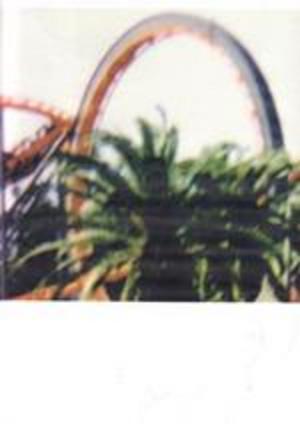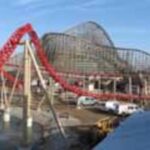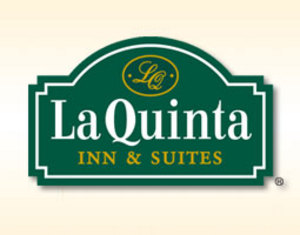Today, people expect roller coasters – particularly steel roller coasters – to offer riders at least one or two “loop-the-loops,” those periods of upside-down thrills that turn us inside out and head over heels. But, come to think of it, roller coasters have not always offered loops and other upside down thrills like they do today. There was a time when roller coaster loops were not much taller than your house, and when taking on a roller coaster loop was as thrilling as it was dangerous to the health (if not more so of the latter). Despite the emergence of steel roller coaster loops during the mid 1970s, the earliest attempts to turn roller-coaster riders occurred much earlier than you probably thought.
The Centrifuge Railway, in Paris, France, was the first roller coaster to ever incorporate a vertical loop. The ride was built in 1846 and, unlike today’s roller coaster cars which include under-track and side-track wheels, the rail car that carried riders around the 13-foot vertical loop relied upon only centripetal force. After an accident, the government closed the ride down.
The next significant attempt at a looping roller coaster did not come along until 1895. This is when Lina Beecher designed the The Flip Flap. Though a great step forward in furthering the concept of the roller coaster loop in a commercial setting, The Flip Flap had one terrible flaw: its 25-foot vertical loop amounted to a nearly perfect circle, and the tight curve coming in and out of the loop exerted high G-forces-enough to break riders’ necks. The Flip Flap was soon disassembled. However, roller coaster loops in the early 20th century lived to see another day.
In 1901, Edmund Prescott designed a vertical loop with an elliptical curve, allowing a great reduction in G-forces at the bottom of the loop. The first roller coaster to introduce the elliptical curve design was Prescott’s Loop the Loop roller coaster on Coney Island. Elliptical curves have remained a vital part of today’s roller coaster design technology, keeping roller coaster speeds high coming into and out of loops without the risk of G forces that would cause neck injuries or other physical harm.
The pursuit to build roller coasters with a vertical loop dwindled as the first decade of the 20th century wore on. In fact, it was not until the 1970s when roller coaster designers would again attempt turning those who ride their creations upside down.
Enter Arrow Dynamics, a company that has designed and built some of the greatest roller coasters (such as Magnum XL-200 at Cedar Point Park in Sandusky Ohio; The Matterhorn at Disneyland, The Loch Ness Monster at Busch Gardens Williamsburg). In 1975, Arrow Dynamics designed and built one of the most important roller coasters in history: The Corkscrew. The Corkscrew opened at Knott’s Berry Farm and became the first modern-era roller coaster (since the early looping coasters of the 19th and early-20th century) to turn its riders upside down. The Corkscrew featured two corkscrew loops and operated for years at the park. The following year, in 1976, America would again see roller coasters incorporate the vertical loop (compared to the corkscrew—an upside-down element stretched out laterally over dozens of feet—a vertical loop is as it names implies, a loop of track that stands straight up).
The late 1970s saw several advances in vertical loop design. Shuttle Loop-roller coasters, as they are famously called, are rides that incorporate a launching device not much unlike those used on aircraft carriers that literally launch the roller coaster train along its tracks, usually parallel to the ground, and into a large vertical loop. As is the case with many shuttle loops (generally a stock design), the train then ascends a steep hill well over 100 feet tall, stops at the top, plunges down the hill backwards, and then rolls riders through the same loop it just transited backward. The train then rolls back into its station, ready to launch the next trainload of thrillseekers. In 1976, the Corkscrew at Cedar Point Park became the first roller coaster with three inversions (periods of being upside down). In 1978, the Loch Ness Monster at Busch Gardens Williamburg was built, becoming the first roller coaster to feature two interlocking vertical loops (two loops, set at different heights, which pass through each other), and the Mind Bender at Six Flags Over Georgia became the first roller coaster with three loops. Anton Schwartzkopf, an icon in the modern steel roller coaster industry, built many terrifying rollercoasters that incorporated a vertical loop (and often loops, plural) with tight horizontal helixes, such as the Scorpion (built in 1980) at Busch Gardens in Tampa, Florida.
As roller coaster design entered further into the 1980s, the vertical loop began giving way to other types of elements that combine turning riders upside down while simultaneously twisting them around curves, plunging then down drops, and bending them around turns. Yet, despite the introduction of brand new, envelope-pushing elements that take riders upside down, the vertical loop (as simple as the design may seem to some of today’s younger riders) has maintained its importance in recent steel roller coasters, and will certainly remain as important to roller coaster design philosophy as the big drop, tight turn and—yes—the brake.
Resources:
Bennett, David. Roller Coaster. Chartwell, Edison; 1998.
“Evolution of Roller Coasters.” Wikipedia. http://en.wikipedia.org/wiki/Notable_roller_coasters#Tallest_steel_roller_coasters
“A Short history of Roller Coasters.” Themed Attraction. http://www.themedattraction.com/coaster.htm
Stanton, Jeffrey. “Coney Island – Sea Lion Park.” http://www.westland.net/coneyisland/articles/sealionpark.htm
“Turning Points in Roller Coaster History.” http://ffden-2.phys.uaf.edu/211_fall2002.web.dir/Shawna_Sastamoinen/History.htm




